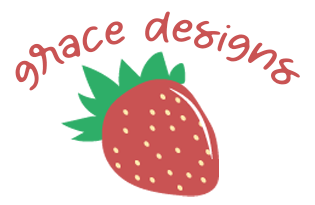
University of Michigan
Navigational App User Research & Testing
February - March 2022
TEAM
Grace Ho
Mitchell Chang
Abby Ng
Serena Wang
Hubert Wong
SKILLS
UX Research
Contextual Inquiry
Affinity Diagramming
User personas
Data visualization
Scenarios
TOOLS
Miro
Google Suite
Problem
University of Michigan students have a difficult time navigating different parts of the campus due to unfamiliarity, confusing layout, and lack of navigational resources.
How do we cut back the amount of time wasted wandering around? How do we make an efficient app to prevent students from getting lost?
Goals
To empathize with the user and their navigation pain points
To gather and analyze user data that may eventually influence the design of an app to help students navigate around campus easily
Survey & Data Visualization
Following the affinity diagram, we designed a survey to collect more data, building questions on the data collected from our initial interview guide. Our main focus this time was indoor navigation as it appeared to be a recurring theme that students struggled through. We created a scanner that made our target users current University of Michigan students who had been on the campus for at least one year. We wanted to asked students with some familiarity of the campus, so they could tell us about the experience they have had thus far with navigating the campus and how, at times, they have struggled to get to their destinations.
We had 26 participants that provided useful information in their survey answers. We then took those responses and created visualizations to help us analyze the data. We found that many individuals use mobile apps regularly to help with navigation and that most of our participants are also likely to download an app for indoor navigation, given their satisfaction with the university's current resources.
Research Phase
Contextual Inquiry & Affinity Diagram
My team and I conducted 10 user interviews during which each user had to answer a preliminary interview as well as navigate to an unfamiliar classroom on campus. During the process, we utilized contextual inquiry and asked them questions based on their demeanor and location as they walked through campus. Afterwards, they would then answer a post-activity interview in which they reflected on the challenges they faced during the activity, the tools they used to get to their destinations, and how they came to their solutions.
After we finished our user interviews, my team coded the information and came together to create an affinity diagram on Miro. With this affinity diagram, we were able to categorize our data into 3 large categories:
1. What students value in navigation
2. Navigation pain points
2. Navigational resources
Developing a User Persona
My team put together our findings to create a persona and a future scenario for our app's use. We set a specific descriptor ("Always Running Late") that demonstrated the need for our app and wrote a goal for our persona to get to a room on north campus (unfamiliar territory for him) on time.
Scenario
Graham is a junior attending University of Michigan and wants to be more social after coming back from the COVID-era. Because of this, Graham wants to try out the Casual Gaming Club.
While researching about the club, he looks into when and where the first mass meeting for the club will be. Graham plans to attend the first mass meeting on North Campus, where he plans to leave slightly earlier in order to account for taking the bus. Graham leaves East Quad, but arrives at the bus stop too late because he didn’t realize that the bus schedule changes in the evening. In order to be on time, Graham would need to locate the classroom for the meeting as soon as it gets to the bus stop.
Graham uses a navigation app to first locate the building, finding the most efficient walking path through the app. Then he continues to use the app to find the classroom and follows the most efficient path through the building to get there on time to join in the club meeting. This allows him to begin networking with the other club members to get to know them better instead of arriving late.
Design Conclusions
My team found that it would be most important to implement indoor navigation into our app, especially because so many students already use navigation apps, like Google Maps and Apple Maps. That is what the majority of people found difficult during the contextual inquiry and when answering the survey.
Takeaways
Data Analysis & Visualization
During this project, I learned how to iterate data. By analyzing and visualizing the data we collected from our initial user interviews, we were able to collaborate and build our survey based on those answers and then build our persona and scenario based off those responses. In the end, user research requires constant feedback and using that feedback to make an even more specific interview or survey to pinpoint the problems and figure out the solutions needed for the design.





